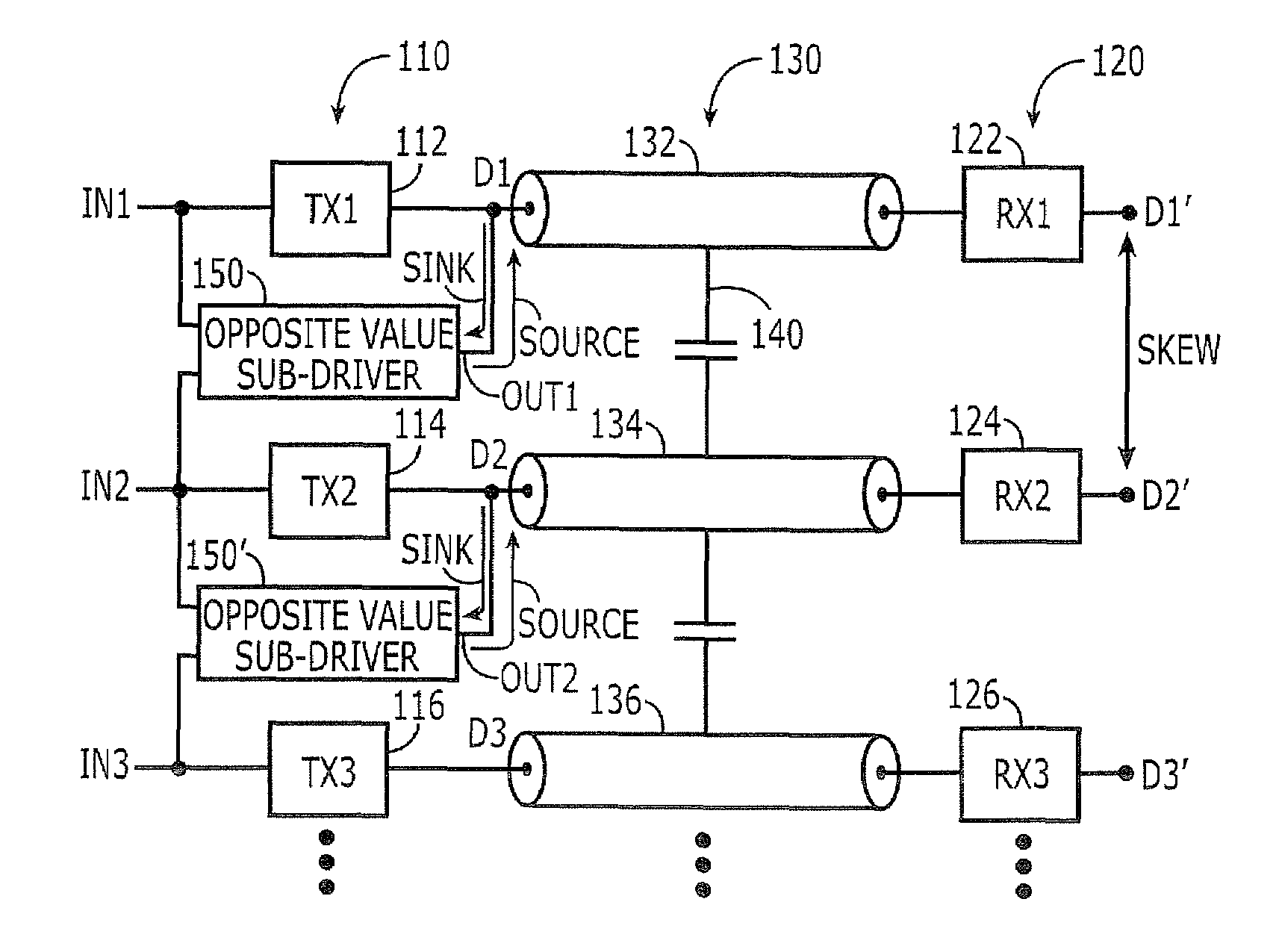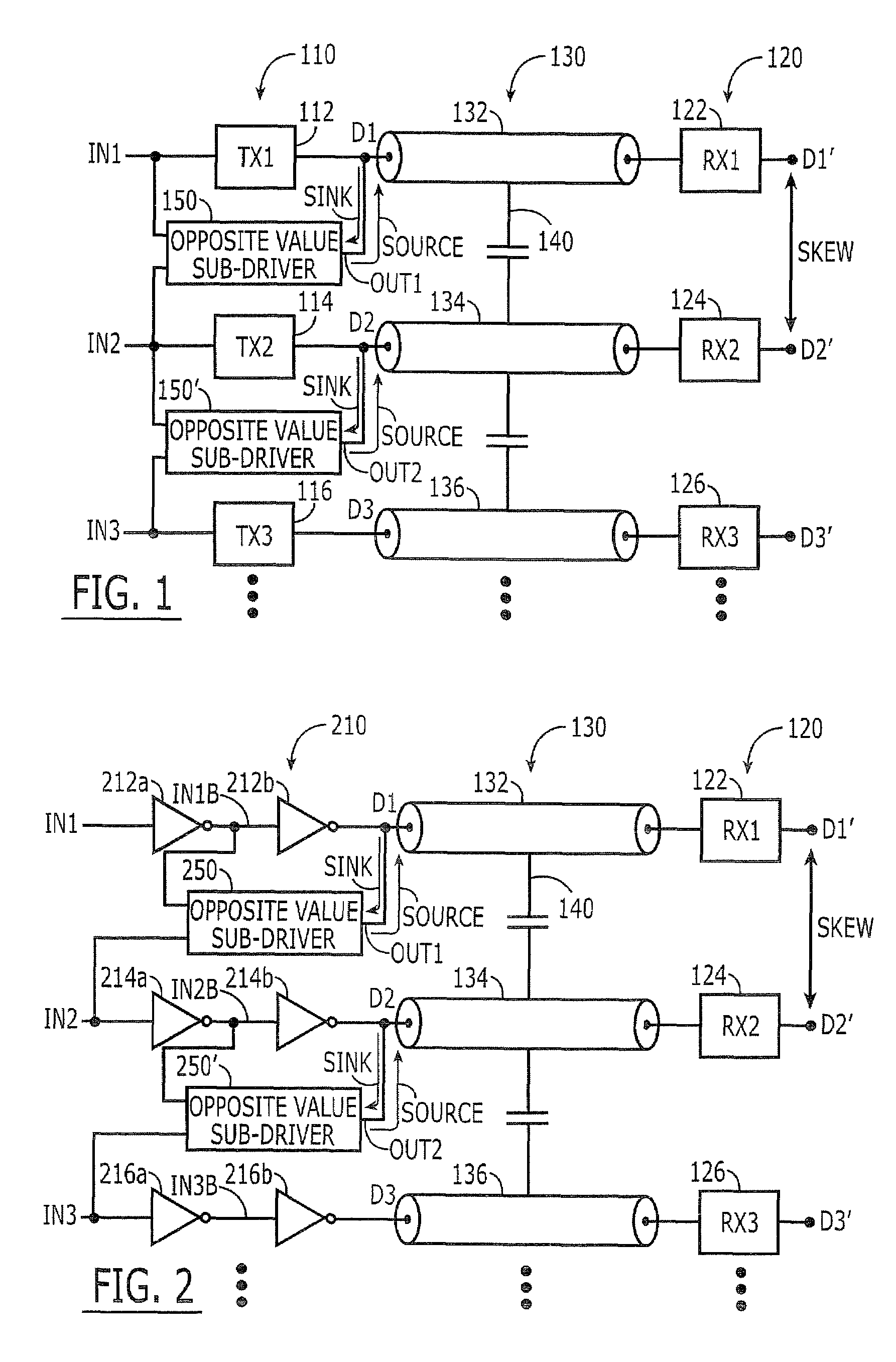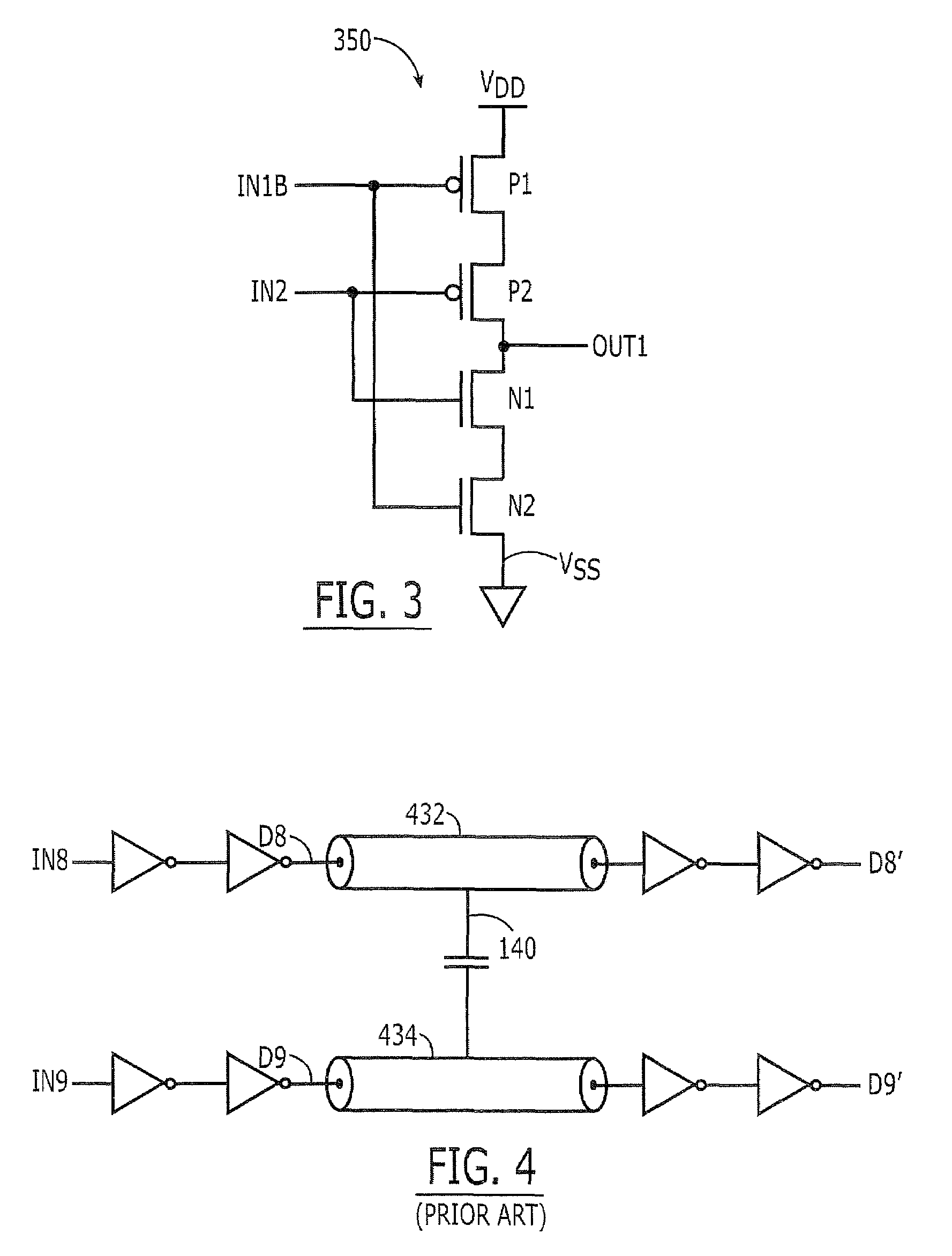Skew-reducing signal line sub-driver circuits, methods and systems
a technology of driver circuit and signal line, applied in the field of digital signal line driver circuit, methods and systems, can solve the problems of limiting the ultimate speed of the circuit, skew between/between adjacent signal lines may become increasingly problematic, and skew may become more problematic, so as to reduce skew
- Summary
- Abstract
- Description
- Claims
- Application Information
AI Technical Summary
Benefits of technology
Problems solved by technology
Method used
Image
Examples
case2
[0043]Case2 illustrates both the first and second input signals simultaneously undergoing a same transition in logical value (shown as from logic low to logic high in Case2). As shown in Case2, D1′ and D2′ are delayed by the same amount that D8′ is delayed, so that the amount of delay indicated by “Gap 1”, “Gap 2” and “Gap 3” is the same. Again, as was the case in Case1, sub-driver circuits and methods according to some embodiments of the invention do not effect the delay time.
[0044]In contrast, in Case3, the first and second digital signals undergo opposite simultaneous transitions, with IN1 transitioning from logic low to logic high and IN2 transitioning from logic high to logic low. As shown for Case3, D1′ and D2′ have reduced skew, as shown by “Gap 4” and “Gap 5”, compared to skew created on D9′, as indicated by “Gap 6”. Accordingly, sub-driver circuits and methods according to embodiments of the present invention can reduce skew for simultaneous opposite value transitions compa...
PUM
 Login to View More
Login to View More Abstract
Description
Claims
Application Information
 Login to View More
Login to View More - R&D
- Intellectual Property
- Life Sciences
- Materials
- Tech Scout
- Unparalleled Data Quality
- Higher Quality Content
- 60% Fewer Hallucinations
Browse by: Latest US Patents, China's latest patents, Technical Efficacy Thesaurus, Application Domain, Technology Topic, Popular Technical Reports.
© 2025 PatSnap. All rights reserved.Legal|Privacy policy|Modern Slavery Act Transparency Statement|Sitemap|About US| Contact US: help@patsnap.com



